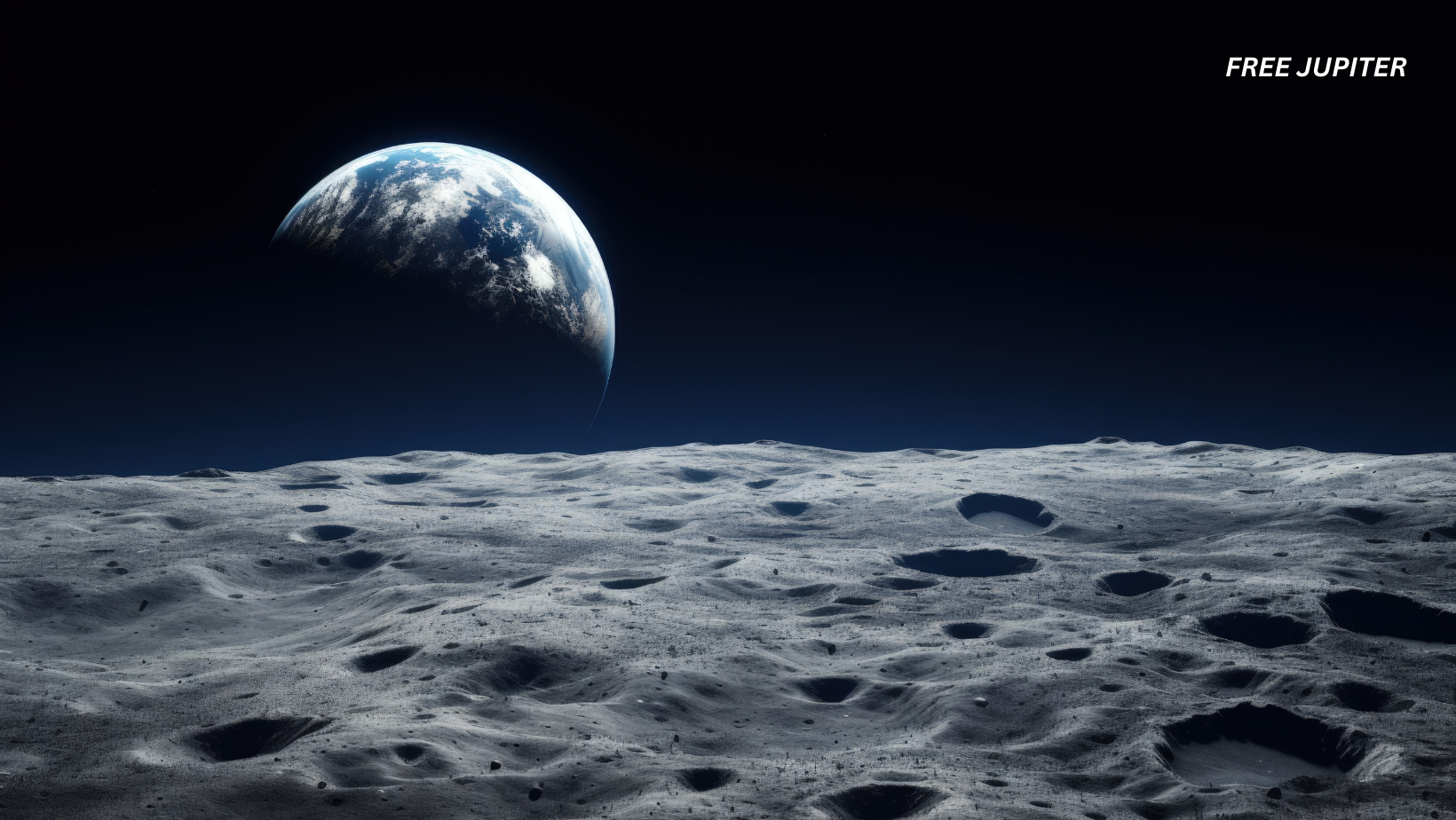Friendly Note: FreeJupiter.com shares general info for curious minds 🌟 Please fact-check all claims—and always check health matters with a professional 💙
When China’s Chang’e-5 mission returned to Earth in December 2020 with precious samples from the Moon’s surface, scientists expected to find the usual suspects—tiny bits of rock, volcanic fragments, and mineral dust. But what they didn’t expect was to find a whisper-thin, space-forged version of one of the most exciting materials on Earth: graphene.
Yes, graphene—the ultra-thin, super-strong, electricity-loving material that scientists often call a “wonder material.” It’s usually made in high-tech labs and used in cutting-edge research. But now, it’s been spotted in moon dust, naturally formed, and just sitting there quietly in the soil like it’s no big deal.
Only, it is a big deal. A very big one. Let’s break it down.
What Did China Actually Discover on the Moon?
A team of Chinese researchers, led by Professor Wei Zhang of Jilin University, was carefully studying a tiny grain of soil brought back from the Moon by the Chang’e-5 mission. They used a laser-based tool that doesn’t damage the sample but can reveal the chemical structure of what’s inside.
To their surprise, this one little piece of lunar dust contained multiple layers of graphene—thin sheets of carbon atoms arranged in a honeycomb pattern, just two to seven layers thick. For reference, a single layer of graphene is around one million times thinner than a human hair. And yet, in this microscopic sliver of moon dust, there they were—clearly stacked, beautifully preserved, and naturally formed.
This was not just a hint or trace. The material gave off a spectral fingerprint—a set of signals showing that it was high-quality, few-layer graphene, remarkably similar to the stuff painstakingly crafted in Earth-bound laboratories.
Read more: Mars’ Glaciers Found to Contain 80% Pure Ice, Redefining The Planet’s Water Reserves
Graphene? In Moon Dirt? Why Is That Such a Shock?
Graphene is made of pure carbon, and that’s where the surprise lies. You see, for decades, scientists believed that the Moon was practically carbon-starved. This belief came from the most widely accepted theory of how the Moon formed—called the giant impact hypothesis.
According to that theory, a Mars-sized object smashed into early Earth about 4.5 billion years ago. The debris from that cataclysm flew into space, clumped together, and eventually cooled into what we now call the Moon. That kind of impact would have generated temperatures so high that volatile elements like carbon would have burned off or evaporated, leaving the Moon dry and chemically simple.
This story made sense for years, especially since even samples brought back by the Apollo missions in the 1960s and 70s showed barely any carbon at all.
But recent discoveries are challenging that assumption.
In 2020, Japan’s Kaguya orbiter detected carbon emissions from all over the Moon’s surface, suggesting that carbon might be more widespread than anyone thought. Now, with actual solid graphene found in the soil, it’s becoming harder to claim that the Moon is carbon-poor.
How Did Graphene Form on the Moon in the First Place?
That’s the fascinating part—and scientists think the answer lies in the harsh, relentless energy from the solar wind.
Unlike Earth, the Moon doesn’t have an atmosphere or a magnetic field to shield it from the Sun. So every day, its surface is bombarded by charged particles, mostly hydrogen protons, that race through space at breakneck speeds—around 250 miles per second. When these particles hit the lunar surface, they can break apart molecules, knock atoms loose, and sometimes generate sudden bursts of heat—up to 2,000°F (1,093°C) in an instant.
The research team believes this intense but brief heat could cause carbon atoms, either already present in the Moon’s rocks or carried there by solar wind, to rearrange themselves into neat, sheet-like layers of graphene.
But there’s more. The team also found tiny iron-rich nanoparticles nestled next to the graphene. And this is key because iron is known to act as a catalyst—a kind of chemical matchmaker that helps carbon atoms link up in exactly the right way. This suggests the Moon may have a built-in, natural system for making graphene when the conditions are just right: carbon atoms, intense heat, and a sprinkle of iron.
Proof of Quality: Why This Isn’t Just Dust and Hype
When scientists want to confirm the presence of graphene, they look for specific light signals given off by the material when it’s hit with a laser. These signals are called spectral bands, and for graphene, three specific ones are important: the G band, the 2D band, and the D band.
In this case, the moon sample showed strong G and 2D bands—a clear sign that the graphene was both real and of high quality. The faint D band, which usually signals defects or damage, was barely there, indicating that these graphene layers were impressively intact for something that had been sitting on the Moon for millions—or maybe billions—of years.
The structure, spacing, and stacking of these sheets were also examined under an electron microscope, confirming that the layers were between 2 and 7 sheets thick and spaced about 0.35 nanometers apart—the same spacing seen in high-grade graphite from Earth.
Read more: Scientists Say Life Once Thrived on Mars—Then Caused Its Own Extinction
What This Means for the Moon’s Origin Story
Let’s go back to that giant impact theory. If the Moon really did form in a fiery explosion, then any delicate materials like carbon should’ve been destroyed in the chaos. But the presence of natural, preserved graphene now throws that into question.
Could the Moon have formed more gently than we thought? Or maybe the Moon has been collecting carbon-rich particles from space over billions of years—like a quiet, dusty sponge absorbing the solar wind?
Some scientists now think the Moon may have started off hot, but cooled in stages, allowing it to absorb or preserve carbon over time. Others are exploring alternative origin theories, such as slow accumulation of dust inside Earth’s orbit, which would’ve trapped more carbon to begin with.
Either way, this discovery forces us to reconsider long-held assumptions about how the Moon came to be—and what it’s made of.
A New Resource? Why Lunar Graphene Could Be Game-Changing
Besides rewriting history books, this find could have huge implications for the future of lunar exploration.
Graphene is already being studied on Earth for use in next-generation electronics, energy storage, water filters, and ultra-strong building materials. If we can mine or manufacture it directly on the Moon, that could make future lunar bases far more sustainable.
Some engineers have proposed building factories on the Moon that extract oxygen from lunar soil—a process that usually discards carbon. But now, with carbon turning out to be more valuable than expected, those plans might be tweaked to harvest carbon for graphene production instead.
Because the graphene was found next to iron particles, future extraction efforts might rely on magnetic tools and sound waves (a process called sonication) to gently collect the sheets, rather than relying on Earth-sent machinery. That could help reduce costs, energy needs, and payload requirements for lunar missions.
Read more: Investigator Says Mysterious Mars Structures ‘Prove There Was Life’ On The Red Planet
Conclusion: The Moon Is Still Full of Surprises
For a long time, we thought we knew the Moon. Cold. Quiet. Chemically simple. But discoveries like this one remind us that even the most familiar worlds can hold cosmic secrets, tucked away in grains of dust smaller than a fingernail.
Natural graphene on the Moon isn’t just a scientific curiosity—it’s a revelation. It forces us to rethink our understanding of lunar history, space chemistry, and the future of human exploration beyond Earth.
One small flake of graphene… one giant leap in our cosmic curiosity.










